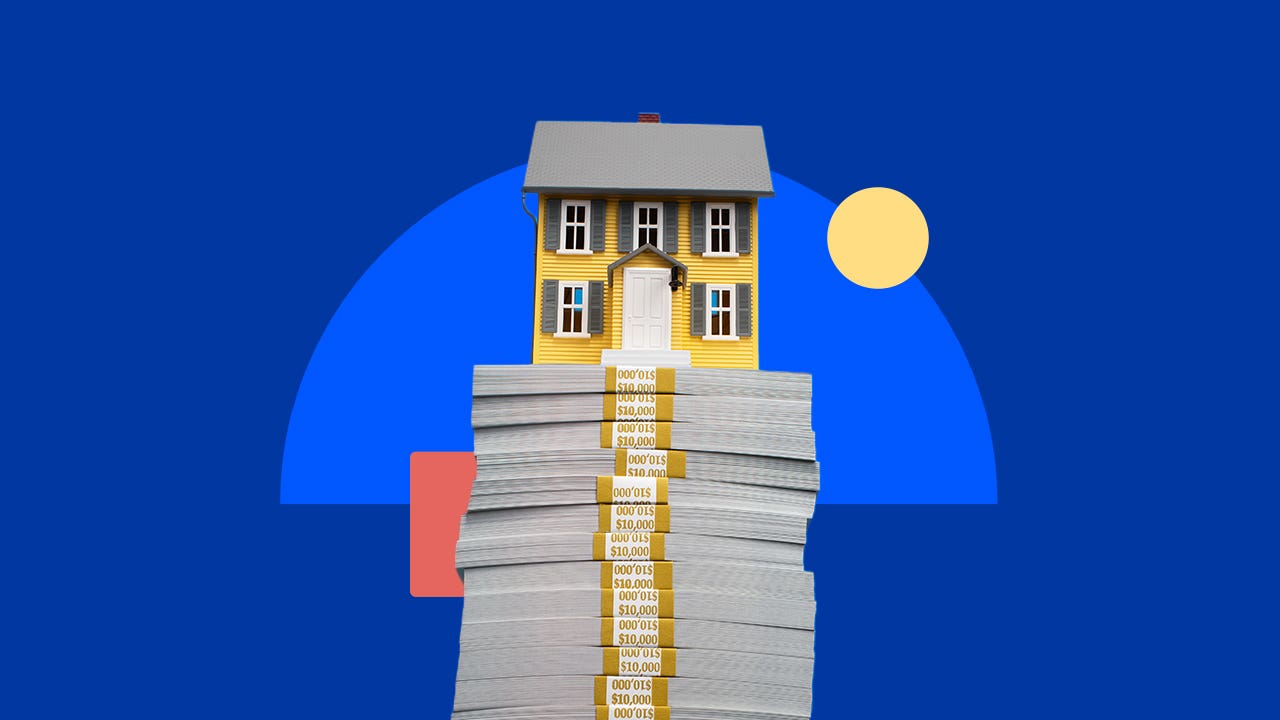
Mortgage rates stay below 7% amid rate-cut optimism
Current mortgage rates
| Loan type | Current | 4 weeks ago | One year ago | 52-week average | 52-week low |
|---|---|---|---|---|---|
| 30-year | 6.90% | 7.02% | 6.98% | 7.23% | 6.84% |
| 15-year | 6.24% | 6.39% | 6.44% | 6.57% | 6.16% |
| 30-year jumbo | 6.97% | 7.06% | 6.88% | 7.19% | 6.88% |
The 30-year fixed mortgages in this week’s survey had an average total of 0.28 discount and origination points. Discount points are a way for you to reduce your mortgage rate, while origination points are fees a lender charges to create, review and process your loan.
Will mortgage rates go down in July?
Monthly mortgage payment at today’s rates
The national median family income for 2024 is $97,800, according to the U.S. Department of Housing and Urban Development, and the median price of an existing home sold in June 2024 was $426,900, a record, according to the National Association of Realtors. Based on a 20 percent down payment and a 6.9 percent mortgage rate, the monthly payment of $2,249 amounts to 28 percent of the typical family’s monthly income.
Will mortgage rates go down?
In the simplest sense, the economy drives whether mortgage rates go up or down. Thirty-year mortgage rates tend to fall in recessions — but not always — and today the economy is anything but a downturn. The jobs market has been strong, and inflation, while lower compared to a few months ago, is still above the Federal Reserve’s 2 percent target.
How are mortgage rates set?
The Fed is likely to cut rates this year, if only once, and optimism about a rate cut allowed mortgage rates to slip below 7 percent, says Michael Merritt, senior vice president at BOK Financial, a bank headquartered in Tulsa, Oklahoma.
“They’re not where consumers want them to be or where mortgage companies want them to be, but there is some relief there,” Merritt says.
To be clear, mortgage rates are not set directly by the Fed, but by investor appetite, particularly for 10-year Treasury bonds, the leading indicator for fixed mortgage prices. That can lead to intense rate swings — they soar on news of Fed hikes, then plummet in anticipation of a cut. Given the Fed doesn’t expect to cut rates as much this year as it initially predicted, mortgage rates are likely to dip rather than plunge.
-
The Bankrate.com national survey of large lenders is conducted weekly. To conduct the National Average survey, Bankrate obtains rate information from the 10 largest banks and thrifts in 10 large U.S. markets. In the Bankrate.com national survey, our Market Analysis team gathers rates and/or yields on banking deposits, loans and mortgages. We’ve conducted this survey in the same manner for more than 30 years, and because it’s consistently done the way it is, it gives an accurate national apples-to-apples comparison. Our rates differ from other national surveys, in particular Freddie Mac’s weekly published rates. Each week Freddie Mac surveys lenders on the rates and points based on first-lien prime conventional conforming home purchase mortgages with a loan-to-value of 80 percent. “Lenders surveyed each week are a mix of lender types — thrifts, credit unions, commercial banks and mortgage lending companies — is roughly proportional to the level of mortgage business that each type commands nationwide,” according to Freddie Mac.



